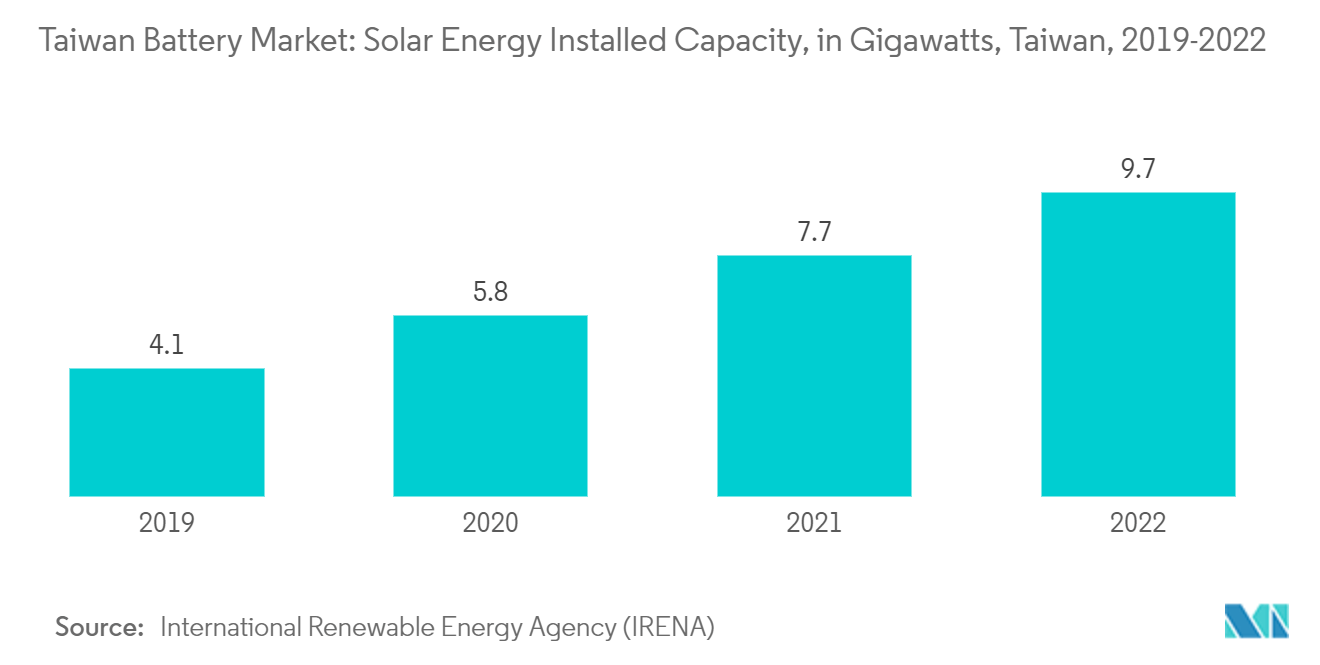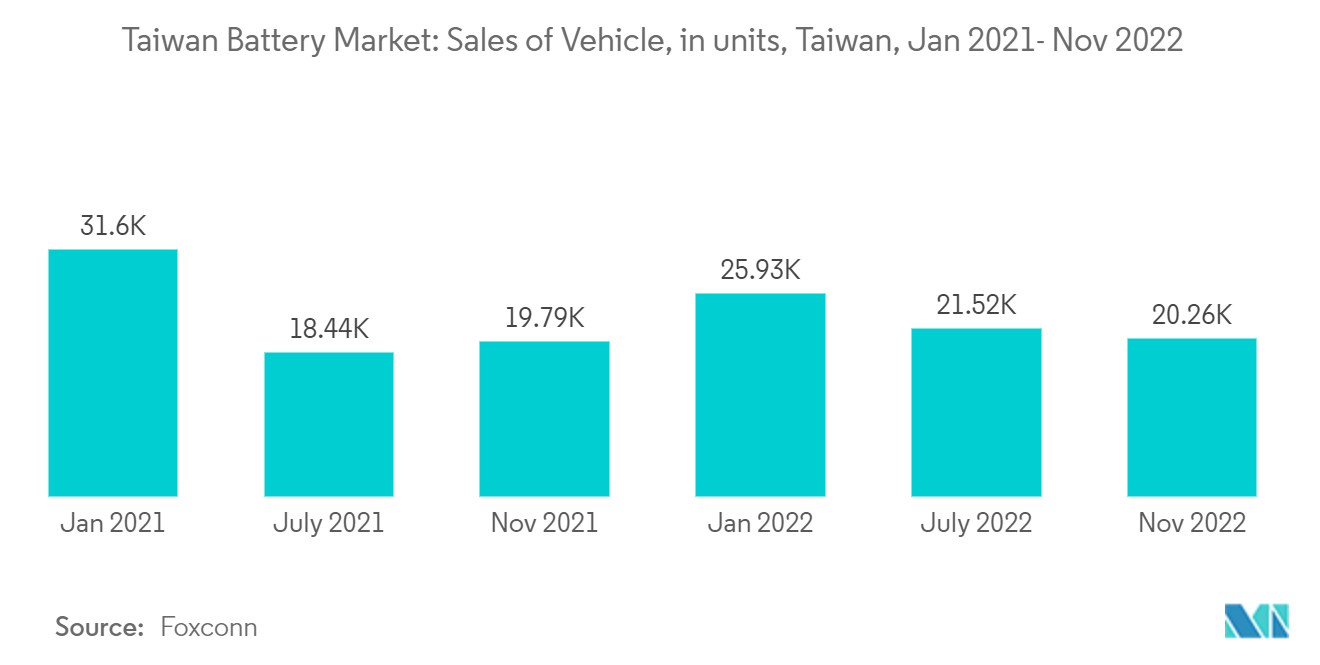Market Trends of Taiwan Battery Industry
Lithium-ion Batteries to Witness Significant Growth
- The industrial sector is experiencing a surge in the utilization of lithium-ion batteries, driven by the expansion of industrial infrastructure, the enhanced economic feasibility of deploying energy storage solutions, and a growing imperative to reduce reliance on the grid for power supply.
- Anticipated growth in consumer electronics sales, encompassing mobile phones, laptops, tablets, power banks, and wearable devices, is poised to significantly boost the demand for lithium-ion batteries throughout the forecast period.
- For instance, in November 2023, Foxconn, the largest contract electronics manufacturer globally and a key supplier for Apple, officially known as Hon Hai Precision Industry Co. Ltd, reported a revenue of USD 23.09 billion for the past month. Although this figure represents the second-highest October revenue in the company's history, it reflects a 4.56% decrease year-on-year, influenced by a comparably high base. However, it marks a notable 12.2% increase from the previous month of September.
- The swift adoption of Li-ion batteries in electric vehicles, energy storage systems, and portable devices is expected, propelled by their low maintenance requirements and superior energy densities.
- In 2022, Taiwan reported an installed solar capacity of 9.72 GW. The rising prominence of renewable energy sources, particularly solar and wind, is amplifying the demand for lithium-ion batteries as an energy storage solution, which is attributed to their high energy density and lightweight nature.
- Furthermore, the declining costs of lithium-ion batteries, coupled with their expanding applications across diverse segments, are anticipated to contribute significantly to the growing share of lithium-ion batteries in the market.
- After experiencing unprecedented price surges in 2022, battery prices are witnessing a decline in the current year. According to research conducted by BloombergNEF (BNEF), the cost of lithium-ion battery packs has notably decreased by 14%, reaching a historic low of USD 139 per kilowatt-hour (kWh).
- This reduction is attributed to the fall in raw material and component prices, facilitated by an increase in production capacity across various segments of the battery value chain. The observed decline in demand growth, which did not meet certain industry expectations, has also contributed to this price adjustment.

Increasing Demand from the Automotive Sector to Drive the Market
- The automotive application segment is at the forefront of the market, driven by the escalating demand for Electric Vehicles (EVs), plug-in hybrid vehicles, and Hybrid Electric Vehicles (HEVs). Notably, Starting, Lighting, and Ignition (SL) batteries within the automotive sector have played a significant role in fueling the heightened demand for batteries.
- Furthermore, the automotive sector is poised to emerge as a pivotal end-user segment for lithium-ion batteries in the future. The increasing adoption of electric vehicles is anticipated to be a significant catalyst for the growth of the lithium-ion battery industry.
- A diverse range of vehicle types is now available globally, featuring varying degrees of hybridization and electrification, including Hybrid Electric Vehicles (HEVs), Plug-in Hybrid Electric Vehicles (PHEVs), and Electric Vehicles (EVS).
- The electric vehicle market is set for substantial expansion, with Foxconn unveiling two electric vehicle prototypes, including a pickup truck, in October 2022. Moreover, Taiwan witnessed a surge in vehicle sales, reaching 20,260 in November 2022. The growing number of vehicles in Taiwan is a crucial driver for the market.
- Additionally, the decreasing prices of lithium-ion batteries and advancements in technology are expected to introduce cost-competitive electric cars, fostering significant growth in battery demand within the automotive industry.
- Therefore, as per the points mentioned above, the adoption of electric vehicles is expected to be the driving factor for the market under consideration during the forecast period.


